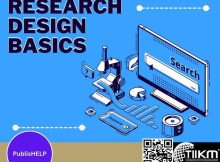
Have you ever wondered how researchers design their studies to ensure accurate and meaningful results? Let’s take a closer look at research design, the blueprint of scientific investigations!
What is Research Design?
Research design refers to the overall plan and structure of a study. It outlines the steps, procedures, and methods that researchers use to gather and analyze data, ensuring the validity and reliability of their findings.
Types of Research Design
- Experimental Design: This design involves the manipulation of variables to establish cause-and-effect relationships. It often includes random assignment, control groups, and carefully controlled conditions.
- Descriptive Design: Descriptive research design focuses on describing characteristics, behaviors, or phenomena without manipulating variables. It includes surveys, observations, and case studies, providing a comprehensive picture of a specific topic.
- Correlational Design: In this design, researchers examine the relationships between variables without manipulating them. Correlational studies help identify patterns, associations, or connections between different factors.
- Exploratory Design: Exploratory research aims to explore new areas or gain initial insights into a topic. It involves qualitative methods such as interviews or focus groups, enabling researchers to generate hypotheses and explore possibilities.
- Sequential Design: Sequential research design combines different types of designs or data collection methods. It allows researchers to collect both quantitative and qualitative data, providing a deeper understanding of complex phenomena.
Factors in Research Design:
- Sampling: Researchers determine the sample size and sampling method to ensure representation and generalizability of findings.
- Variables: Researchers identify and define variables, determining how they will be measured or manipulated during the study.
- Data Collection: Researchers select appropriate tools, such as surveys, interviews, or observations, to collect data aligned with their research objectives.
- Data Analysis: Researchers choose suitable statistical or qualitative analysis methods to interpret the collected data accurately.
Research design is the foundation of any study, guiding researchers in their pursuit of knowledge and understanding. It ensures that the research is well-structured, robust, and capable of producing reliable and meaningful results.
So, the next time you delve into a research paper, remember that behind the findings lies a meticulously designed research plan, shaping the insights that contribute to our collective knowledge!

